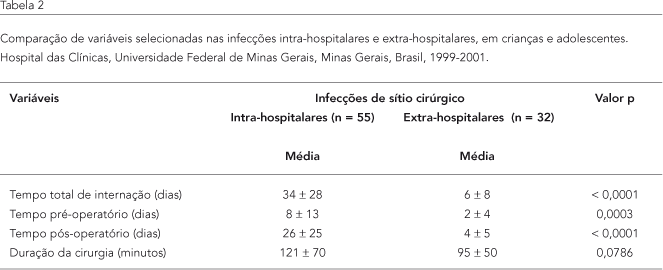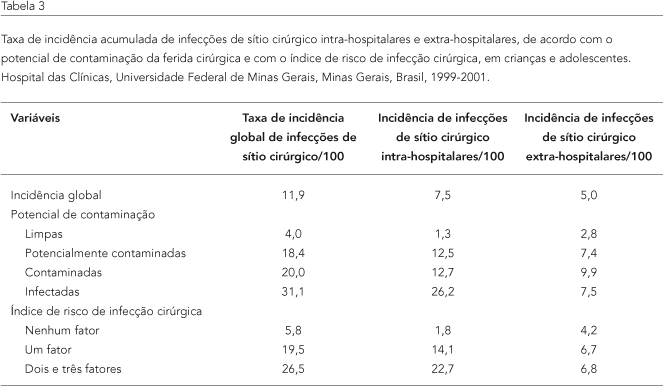Hospital infections are the main complications in surgical practice. Surgical site infections are the most frequent, and can manifest after hospital discharge. In Brazil, the majority of clinical services do not maintain infection surveillance after discharge. In order to evaluate the importance of such surveillance and the profile of these post-discharge infections, a cohort of 730 child and adolescent surgical patients was followed in a teaching hospital, from 1999 to 2001. The accumulated incidence was calculated. Student's t test was used to compare mean values and the Kaplan-Meier method to analyze the period until infection, using a p value of < 0.05. A total of 87 surgical site infections were diagnosed, 37% of which after discharge. The overall surgical infection rate was 11.9%; without outpatient follow-up, the rate would have been 7.5%. Post-charge infections were diagnosed after a mean of 11.3 ± 6.4 days, and in these patients the preoperative and postoperative hospital stays were significantly lower than in the group with in-hospital infections. The study indicates the importance of post-discharge surveillance in determining the real incidence of surgical site infections.
Cross Infection; Surgery; Pediatrics; Health Evaluation





